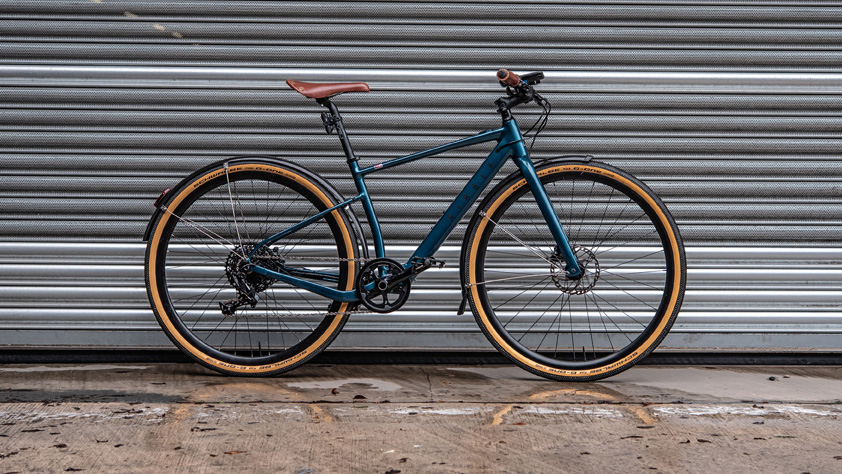You can trust Coach
Ribble’s first hybrid e-bike certainly has the wow factor. I first saw one at the London Bike Show this year and the petrol-blue colourway, contrast tyres, and faux-leather seat and handles are nothing if not eye-catching. The lack of a bulky battery affixed to the pannier rack or down tube also meant I did a double take when I saw the on/off button.
It also made a strong first impression when I hoicked Coach’s review model out of the box – owing to the fact that I was able to lift the bike out of the box without struggling as I have with every other e-bike that’s been shipped rather than ridden over. It’s just 13.5kg, and you’re unlikely to find an e-bike that’s significantly lighter – 20kg is standard for electric bikes around the £2,000 range.
It caused a flush of optimism that this was going to be the best e-bike I’ve ridden. In my experience there’s not been a noticeable difference in power and performance between “urban” hybrid e-bikes from different brands. That’s mostly down to the dominance of third-party battery and motor systems, which are almost invariably made by Bosch and Shimano.
Ribble has used something different in the form of ebikemotion, which hides the battery in the downtube. As well as making the bike lighter, this means it looks and rides more like a traditional bike. The trade-off is that the battery won’t last as long – I got between 30km and 40km out of a charge on the highest level of assist – and the system isn’t as powerful as others.
It’s still easier than pedalling a traditional bike, but I did notice myself having to put in more effort, especially up hills. That’s not a complaint, just an indication of the trade-off brought about by the ebikemotion system.
See related
- Save £££s On An E-Bike Using The Cycle To Work Scheme
- The Best Electric Bikes For Commuting
- Electric Bike Buyers’ Guide
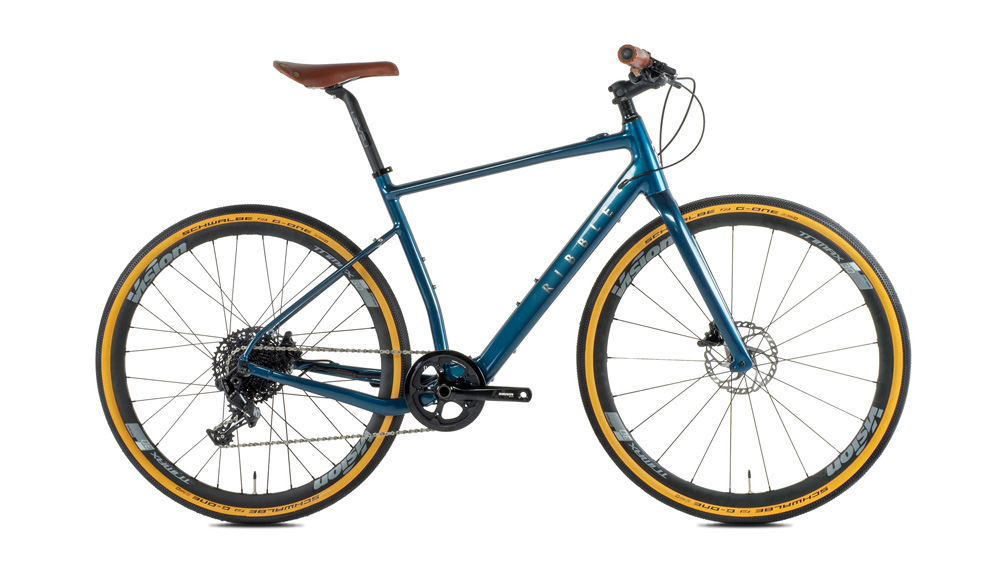
One complaint I will make is that the responsiveness of the motor has the on/off feel of cheaper e-bikes. As you pay more, better sensors help the motor to produce gradually more power in line with the power you’re putting through the pedals, giving much greater control and a more natural feel.
Instead, as soon as I started pedalling on the AL e, the motor turned on, producing the amount of assistance I selected – there are three and I always went for the highest one. That’s unlikely to be a problem if you’re not cycling in a busy urban area, but I go between south and central London and when pedalling quickly to shift down a gear as I approached a red light, the motor sped me up.
On other e-bikes you can use a console on the handlebars to lower the assist level quickly, and while there is one button on the crossbar which will do this it’s not as quick a process as you need it to be when approaching traffic lights.
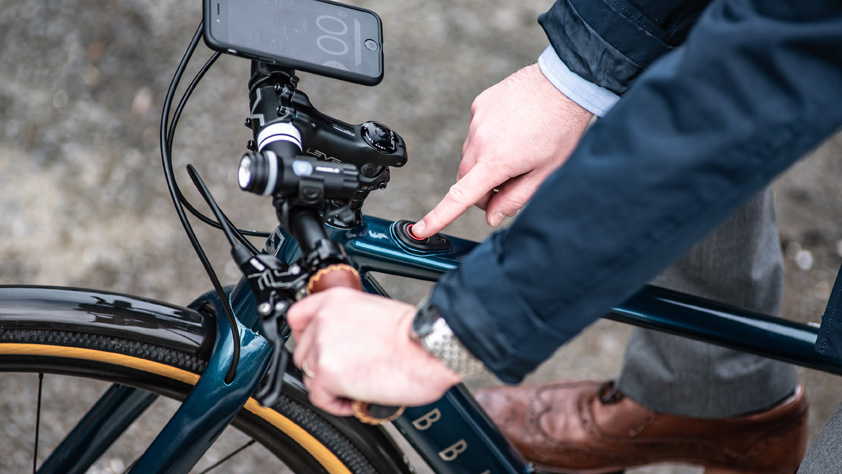
In all other respects though, I am a big fan of that button. There’s a light-up halo around it which changes colour between white, green, orange and red with each press. The colour indicates the battery level and, as you start pressing the button, the level of assist you’ve selected. It’s intuitive and means you can get going quickly.
The other advantage of the button is that it’s discreet, which meant I felt more confident locking the bike up outside for short periods because at first glance as it looks like a regular hybrid and therefore, hopefully, less enticing for thieves. It’s not cheap-looking by any means, but neither does it scream four-figure e-bike.
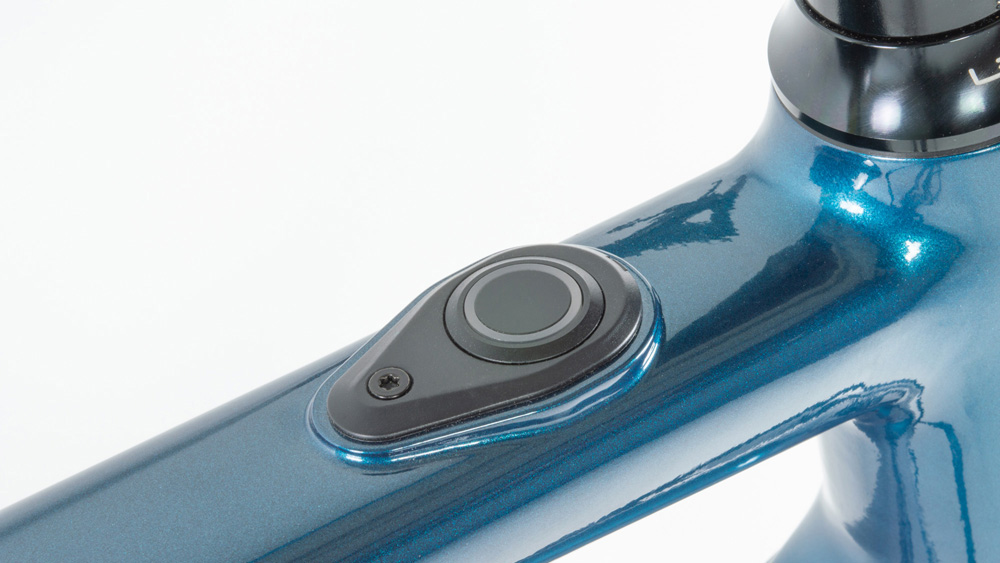
The charging port is revealed by an inconspicuous rubber flap where the down tube meets the seat tube. This does mean you can’t leave your bike locked up outside and remove the battery to charge indoors, but I wasn’t going to leave a two-grand bike outside overnight anyway.
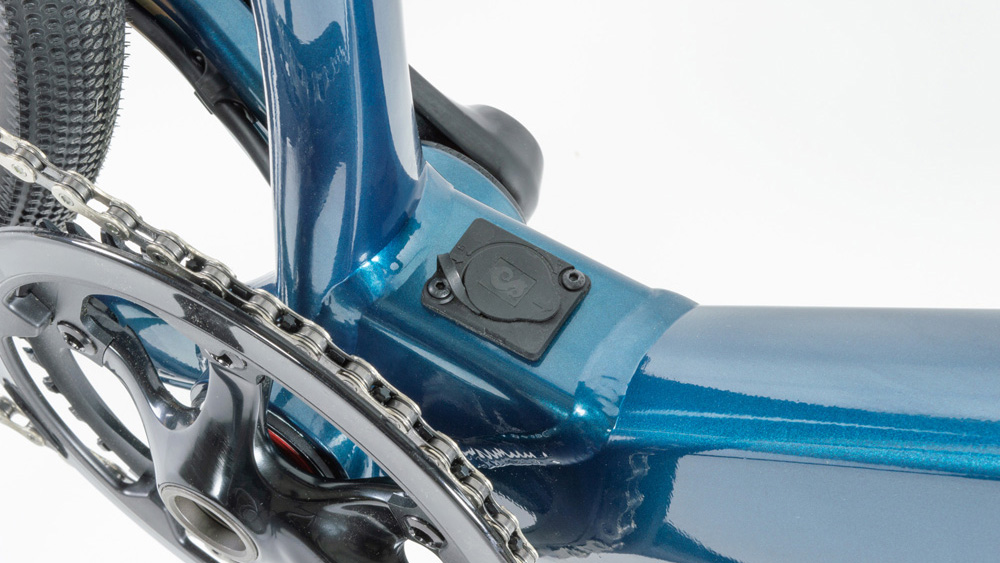
There’s also a partner app for smartphones and smartwatches. In this you can track rides, modify the amount and rate of assist for each level and, if you have a handlebar mount, see live stats on your ride. If you spring for a subscription as well, it’ll add navigation.
The other problem I had is that some of the accessories feel low-quality. The cap from one end of the handlebars fell off – thankfully this happened where I lock up my bike overnight so I was able to pop it back in a few days later when I realised – and the other cap was beginning to come out by the end of the test period. A rip also appeared in the back of the faux-leather seat for no discernable reason, and the seat was too hard for my liking. I also managed to break the Knog Oi Classic bell which comes with the “fully loaded” option (which adds mud guards and a pannier rack, plus a few other extras) by hanging a U-lock on the handlebars while moving the bike around.
It’s for these reasons that I’d be tempted to look at the Orbea Gain F30 instead. While we haven’t ridden it, it uses the same ebikemotion system, is also a hybrid, has broadly equivalent specs and is £200 cheaper. Those aren’t the most substantial differences, so if you only have eyes for that gorgeous AL e, we wouldn’t hold it against you.
Buy from Ribble | £1,999-£2,099

Jonathan Shannon was the editor of the Coach website from 2016 to 2024, developing a wide-ranging experience of health and fitness. Jonathan took up running while editing Coach and used the training plans on the site to run a sub-40min 10K, 1hr 28min half marathon and 3hr 6min marathon. He’s an advocate of cycling to work and is Coach’s e-bike reviewer, and not just because he lives up a bit of a hill. He also reviews fitness trackers and other workout gear.
